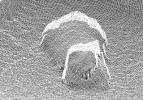Hello Boris,
I have found some aproximate solution like y= a * tan( (x-b)*c) +d
Using the CLNUIDevice.dll is fairly easy.
Just invoke CLNUIDevice.h + the lib and dll
Here’s some code to read out the depthmap and map into into real spacial coordinates:
( sorry for posting that much .. )
============================================
============================================
typedef double point3[3];
//————————————————————————————————————
int vecNorm( point3 p, point3 res)
//————————————————————————————————————
{
int i;
double s;
for (s=0.,i=0;i
<3;i++)s+=(p
*p);
if (s==0.0) return 0;
s=sqrt(s);
for (i=0;i
<3;i++)res
=p/s;
return 1;
}
//————————————————————————————————————
void vecScale( point3 p, double s )
//————————————————————————————————————
{ p[0]*=s;p[1]*=s;p[2]*=s;}
//————————————————————————————————————
double vecMult( point3 a,point3 b)
//————————————————————————————————————
{
return(a[0]*b[0]+a[1]*b[1]+a[2]*b[2]);
}
//———————————————————————————————————————————
double *map2space( double *pp )
//———————————————————————————————————————————
// just an aproximate solution from empiric data
{
static double p[3];
// pp[0] 0.. 640
// pp[1] 0.. 480
// pp[2] 300 .. 1090
double pi=3.1415926535897932384626433832795;
double a,b,c,d;
a=50;
b=0;
c=0.0014410975475182537791113043042567;
d=12;
double s,sc,x,y,z;
s=pp[2];
s=a*tan((s-b)*c)+d; // map kinect -> cm
p[0]=(pp[0]-240);
p[1]=-(pp[1]-320);
p[2]=620; // aproximate focal length
double n[3]={0,0,1};
vecNorm(p,p);
sc=1/vecMult(p,n); // 1/cos(phi)
vecScale(p,s*sc);
return p;
}
//———————————————————————————————————————————
void DoCam()
//———————————————————————————————————————————
{
CLNUICamera cam;
PDWORD pData;
cam=CreateNUICamera();
StartNUICamera(cam);
bool ret;
ret=GetNUICameraDepthFrameRAW(cam, ( PUSHORT )pData, 500 );
PUSHORT lpU;
unsigned short u;
int ik,jk;
double x,y,z;
double p[3]={0,0,0},*pS;
int m=480; // Meshcount in X
int n=640; // Meshcount in Y
int dd=1;
p[2]=0;
// Read out the depth-Buffer, convert pixel into point in 3D-space
for (lpU=( PUSHORT )pData,i=0;i
for (j=0;j
{ u=*lpU;
lpU++;
p[0]=(double)i;
p[1]=(double)j;
if (u > 0 && u < 2044 )
p[2]=(double)u;
pS=map2space(p);
NOW_HAVE_SOME_FUN_WITH_THAT_POINT_IN_3D( pS ); //:-))
}
StopNUICamera(cam);
DestroyNUICamera(cam);
}

Click thumbnail to see full-size image